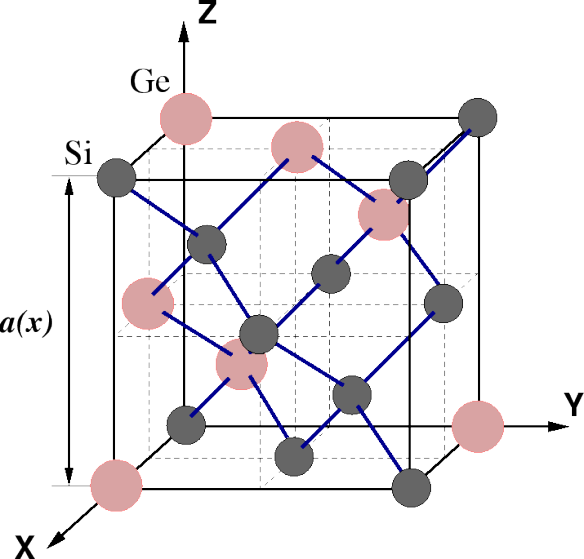Powering Voyager – SiGe alloys
What does it looks like?

A model of how it is thought the SiGe alloy arranges itself. The image is taken from http://www.iue.tuwien.ac.at/phd/wittmann/node9.html
What is it?
This material is pretty simple from lots of standpoints – it's only made from two elements (silicon and germanium) and forms the diamond structure.
Despite the simplicity, SiGe alloys (sometimes known as 'Siggie') have had some pretty complex uses, from being used to power spacecraft to being a massive technological leap for semiconductors.
The use of SiGe alloys in spacecraft comes from the fact that, when combined in the correct proportions, SiGe becomes a thermoelectric material. This means that it can turn heat into electricity. With the deep space probes, there's just not enough sunlight to power these craft with solar energy. The solution has been to use radioisotopes (often of plutonium) to create heat, and then thermoelectric materials like SiGe to convert this into electricity to run the spacecraft. The success of this is impressive: both Voyager 1 and 2 used SiGe alloys in their power generators and are still going to this day…
Where did the structure come from?
There's no refined crystal structure for this alloy, so we couldn't find SiGe in the Crystallography Open Database, but the model that we have shown comes from here. There's lots more information on that site about how this material is made and the physics behind it.






